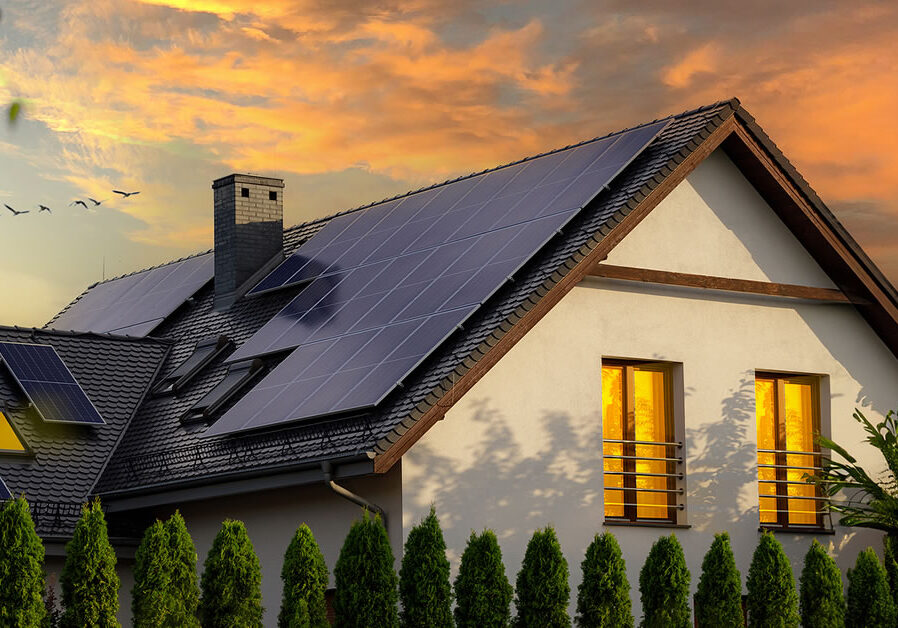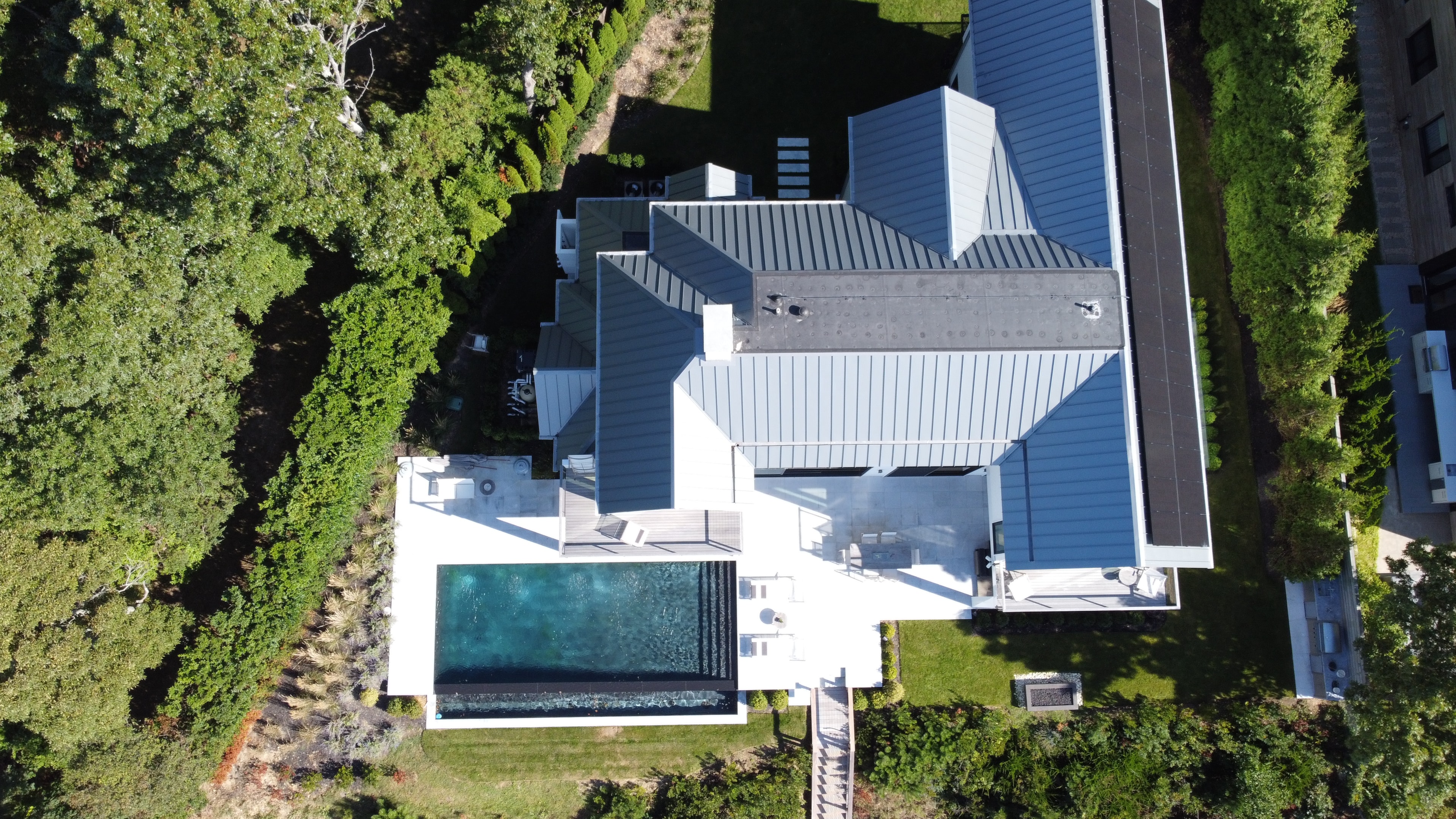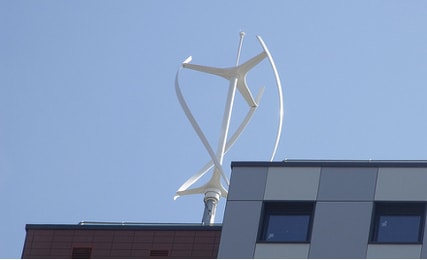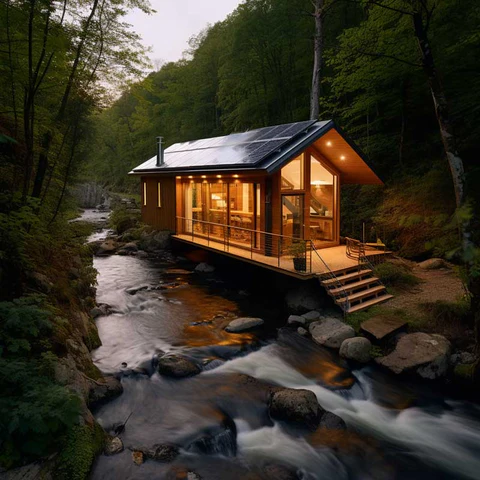Renewable Energy: Mechanical Engineering for Energy-Efficient Homes
Creating sustainable, energy-efficient homes involves the strategic integration of renewable energy with advanced mechanical engineering. With growing awareness of environmental concerns and the desire for cost-effective solutions, homeowners and architects are increasingly looking to renewable energy sources to meet modern energy needs. By combining cutting-edge technologies with thoughtful design, these homes aim to reduce environmental…
Morgan Poulos Keating, PE
July 24, 2024
15 mins read

Creating sustainable, energy-efficient homes involves the strategic integration of renewable energy with advanced mechanical engineering. With growing awareness of environmental concerns and the desire for cost-effective solutions, homeowners and architects are increasingly looking to renewable energy sources to meet modern energy needs. By combining cutting-edge technologies with thoughtful design, these homes aim to reduce environmental impact while enhancing user comfort and efficiency.
The integration of renewable energy systems into residential spaces not only underscores a commitment to environmental stewardship but also showcases the potential for significant cost savings and improved living conditions. Renewable energy production is essential in this context, as it supports the transition towards a primary energy mix dominated by non-fossil sources. Mechanical engineering plays a pivotal role in this process, optimizing the performance of heating, ventilation, and air conditioning (HVAC) systems, plumbing, and building envelopes to ensure maximum efficiency. This synergy between renewable energy and mechanical engineering is transforming residential design and construction, setting new standards for sustainability and energy efficiency.
What are Renewable Energy Sources?
Renewable energy sources, or also referred to as green energy, are those that can be replenished naturally over short periods of time, making them a sustainable alternative to traditional fossil fuels. Unlike finite resources such as coal, oil, and natural gas, renewable energy harnesses the power of natural processes that are constantly replenished. This not only helps in reducing greenhouse gas emissions but also mitigates the environmental impact associated with energy production.
The fundamental principle behind renewable energy is its ability to derive energy from resources that are naturally occurring and virtually inexhaustible. These resources are harnessed using advanced technologies that convert natural energy into usable power for homes and businesses. This process of electricity generation from renewable sources like wind energy, geothermal energy, and solar energy is crucial in the global effort to combat climate change, promote energy independence, and create a more sustainable future.
These sources provide a pathway to a cleaner, more resilient energy system that supports environmental sustainability while meeting the growing energy demands of today.
Significance of Renewable Energy in Green Building and Sustainable Design
As the focus on sustainability intensifies, integrating renewable energy sources into green building and sustainable design becomes increasingly significant. Renewable energy generation plays a critical role in reducing the environmental impact of residential construction and enhancing the overall efficiency of homes.
Residential Green Building Drivers
The movement towards residential green building is driven by several key factors.
Growing Demand for Sustainable Design and Energy Efficiency
Homeowners and developers are increasingly seeking ways to reduce energy consumption and minimize the carbon footprint of buildings. This growing demand for sustainable design and energy efficiency is fueled by the desire to lower utility costs, improve indoor air quality, and contribute to a healthier planet by reducing greenhouse gas emissions.
Energy Code Compliance
Compliance with evolving energy codes and regulations, such as the International Energy Conservation Code (IECC) and local building codes, ensures that new constructions meet higher standards of energy efficiency. These regulations often necessitate the integration of renewable energy systems, such as solar panels or geothermal systems, to achieve the required energy performance levels, further driving the adoption of sustainable practices.
Benefits of Renewable Energy in Residential Construction
Incorporating renewable energy into residential construction offers numerous benefits:
- Cost savings: Renewable energy systems, like solar panels and wind turbines, can significantly reduce utility bills by providing a sustainable source of power.
- Environmental impact: Utilizing renewable energy reduces greenhouse gas emissions and the overall carbon footprint of a home, contributing to environmental sustainability.
- Property value: Homes equipped with renewable energy systems often have higher property values and appeal to environmentally-conscious buyers.
- Energy security: Diversifying the energy supply with renewable sources reduces dependence on fossil fuels, which are subject to price volatility and geopolitical tensions.
- Long-term investment: Renewable energy systems can offer a favorable return on investment through energy savings and potential incentives or rebates.
The Role of Mechanical Engineering in Green Building
Mechanical engineering is essential in the implementation of a renewable energy system. This expertise ensures that these systems, including those for generating electricity, water and space heating, and cooling, are designed, optimized, and integrated effectively.
Designing, Optimizing, and Implementing Alternative Energy Systems
Mechanical engineers design, optimize, and implement alternative energy systems, such as solar panels, wind turbines, geothermal heat pumps, and biomass boilers. They conduct detailed energy analyses to determine the most effective solutions for each project, ensuring maximum efficiency and energy savings.
LEED Certification
Mechanical engineers play a vital role in achieving Leadership in Energy and Environmental Design (LEED) certification for residential buildings. They contribute to various LEED credits by designing high-efficiency HVAC systems, optimizing energy performance, and integrating renewable energy solutions. Achieving LEED certification enhances the marketability and value of residential properties and demonstrates a commitment to sustainability.
Home Energy Rating System
Mechanical engineers also contribute significantly to achieving favorable Home Energy Rating System (HERS) scores, which measure a home’s energy performance. Through energy modeling, system integration, and on-site testing, they ensure that homes achieve low HERS scores, indicating high energy efficiency. A low HERS score can lead to lower utility bills and increased property values, further emphasizing the importance of mechanical engineering in sustainable residential construction.
By leveraging their expertise in designing, optimizing, and implementing renewable energy systems, as well as contributing to LEED certification and achieving low HERS scores, mechanical engineers help to drive advanced green building practices and promote sustainability in residential construction.
Renewable Energy Solutions in Mechanical Engineering
By leveraging advanced technologies, mechanical engineers design and implement systems that harness natural resources to provide clean, renewable energy. Electrical energy storage methods, such as batteries and pumped hydroelectric, are essential for managing excess energy generated from sources like wind power, tidal power, and solar power. Below are some of the renewable energy solutions that can be used in residential construction.
Solar Power – Photovoltaic Systems
Photovoltaic (PV) systems convert sunlight directly into electricity using solar cells. According to the National Renewable Energy Laboratory, the amount of energy from the sun that falls on the earth in one hour is more than the energy used by everyone in the world in one year. These systems are typically installed on rooftops via solar panels or integrated into building materials, such as solar shingles. Here’s how a typical PV system is set up:
Solar panels or shingles capture sunlight and convert it into direct current (DC) electricity. This DC electricity is then routed to an inverter, which converts it into alternating current (AC) electricity suitable for home use. The system may also include a battery for storing excess energy and a net meter that tracks energy fed back into the grid. The scalability of PV systems allows for tailoring the installation to the specific energy needs of a home.
Benefits
- Reduction in energy costs: By generating electricity on-site, homeowners can significantly reduce their reliance on the grid and lower their energy bills.
- Net metering: Excess electricity generated by PV systems can often be sold back to the grid, providing additional financial benefits.
- Scalability: PV systems can be easily scaled to meet the specific energy needs of a home, making them a flexible solution for different residential applications.
Design Considerations
- Orientation and tilt: Ensuring proper orientation and tilt of panels for maximum sun exposure, ideally facing south in the northern hemisphere.
- Structural support: Assessing the roof’s condition to ensure it can support the additional weight of solar panels, which can be significant.
- Local regulations: Navigating local building codes and zoning laws, which may include restrictions on panel placement, aesthetic guidelines, and permitting processes. It’s essential to understand any incentives or rebates offered by local governments or utilities which can lower costs.

Solar Water Heating
Solar water heating systems use solar collectors to capture and convert sunlight into heat, which is then used to warm water for domestic use. The system works as follows:
Solar collectors, typically mounted on the roof, absorb solar energy and transfer it to a fluid (either water or a glycol mixture) that circulates through the collectors. This heated fluid is then passed through a heat exchanger, which transfers the heat to the water stored in a storage tank. A controller system manages the flow and ensures optimal heating. These systems can be integrated with existing water heating systems to provide a reliable and consistent hot water supply.
Benefits
- Energy savings: Solar water heating can reduce water heating costs by up to 50-80%.
- Environmental benefits: By using solar energy, these systems help reduce greenhouse gas emissions and reliance on fossil fuels.
- Long-term performance: Solar water heating systems have a long lifespan and require minimal maintenance, making them a cost-effective investment.
Design Considerations
- Sizing: Properly sizing the system based on household hot water demand to ensure efficiency and meet needs.
- Collector placement: Positioning collectors for optimal sun exposure, ideally south-facing in the northern hemisphere, and ensuring they are not shaded by trees or other structures.
- Integration: Seamlessly integrating with existing water heating systems, which might involve plumbing modifications, and ensuring compatibility with current systems.
- Local regulations: Complying with local building codes and obtaining necessary permits, which may involve inspections and adherence to specific installation standards.

Geothermal Heat Pumps
Geothermal heat pumps (GHPs) utilize the stable temperatures found just below the Earth’s surface to provide heating and cooling for homes. Here’s how they operate:
A ground heat exchanger, consisting of a network of pipes buried in the ground (either horizontally or vertically), circulates a fluid that absorbs the earth’s stable thermal energy. This fluid is then pumped into the heat pump unit located inside the house. In the winter, the heat pump extracts heat from the fluid and distributes it throughout the home via a duct or radiant heating system. In the summer, the process is reversed to provide cooling.
Benefits
- Energy efficiency: GHPs can deliver up to four times the energy they consume, making them one of the most efficient heating and cooling options available.
- Year-round comfort: Geothermal systems provide consistent heating in the winter and cooling in the summer, regardless of outdoor temperatures.
- Environmental impact: By using renewable geothermal energy, GHPs reduce greenhouse gas emissions and the overall carbon footprint of a home.
Design Considerations
- Site assessment: Evaluating ground conditions, including soil composition and moisture levels, to determine the best loop system configuration (horizontal, vertical, or pond/lake).
- Loop configuration: Choosing between horizontal loops (which require more land), vertical loops (which involve deeper drilling), or pond/lake loops (if a water source is available) based on site conditions and space available.
- Integration: Ensuring the geothermal system integrates well with existing HVAC systems, which may require ductwork modifications or new distribution systems.
- Local regulations: Understanding local regulations regarding drilling and ground loop installation, which may include environmental impact assessments and specific permitting processes.

Micro Wind Turbine Power
Micro wind turbines harness the power of the wind to generate electricity for residential use. Here’s how they work:
A wind turbine consists of blades that capture wind energy and rotate a rotor connected to a generator. The generator converts the rotational energy into electricity, which is then passed through an inverter to produce AC power suitable for home use. These turbines are typically mounted on tall towers to capture higher wind speeds and can be used as a supplementary power source.
Benefits
- Renewable energy source: Wind power is a clean, renewable energy source that can help reduce dependence on fossil fuels.
- Cost savings: Micro wind turbines can lower electricity bills by generating a portion of the home’s energy needs.
- Off-grid capability: In remote locations, micro wind turbines can provide a reliable source of power, reducing the need for grid connection.
Design Considerations
- Wind resource assessment: Conducting a detailed analysis of wind speeds and patterns to determine the feasibility of wind power for the specific location.
- Site placement: Selecting the optimal placement and tower height to maximize wind capture, usually requiring a minimum tower height to avoid turbulence from nearby structures.
- Permitting: Complying with local zoning laws and obtaining necessary permits, which may involve noise regulations, visual impact assessments, and neighbor agreements.
- Maintenance: Planning for regular maintenance to ensure the turbine operates efficiently and safely over its lifespan.

Residential Hydropower
Residential hydropower systems generate electricity by harnessing the energy of flowing water, such as from a nearby stream or river. The technology works by:
A water turbine is placed in the water flow, which turns the turbine as water passes through it. This mechanical energy is converted into electricity by a generator. The generated electricity is then converted to usable AC power by an inverter. Hydropower systems require a consistent water flow to be effective and are often less common due to specific site requirements.
Benefits
- Consistent energy production: Hydropower can provide a continuous source of energy, unlike solar and wind, which are dependent on weather conditions.
- High efficiency: Hydropower systems have high energy conversion efficiencies, making them a highly effective renewable energy solution.
- Environmental impact: Properly designed hydropower systems can minimize environmental disruption and provide a sustainable energy source with low emissions.
Design Considerations
- Flow rate and head: Assessing the water flow rate and vertical drop (head) to determine energy potential and the appropriate type of turbine.
- Environmental impact: Designing the system to minimize ecological disruption, which may involve fish-friendly turbines or bypass systems.
- Permitting: Navigating the permitting process, which may include environmental impact studies, water rights issues, and compliance with local, state, and federal regulations.

Challenges of Renewable Energy Integration
While the benefits of integrating renewable energy into residential construction are significant, there are several challenges that need to be addressed to ensure successful implementation. The International Renewable Energy Agency (IRENA) plays a crucial role in addressing these challenges by providing concrete policy advice, facilitating capacity building and technology transfer, and promoting the adoption of renewable energy worldwide.
High Upfront Equipment Cost
One of the most significant barriers to the widespread adoption of renewable energy systems is the high upfront cost of equipment and installation. Solar panels, wind turbines, geothermal heat pumps, and other renewable energy technologies require a substantial initial investment.
Although these systems can lead to long-term savings and potential incentives, the initial expense can be a deterrent for many homeowners and developers. Financial solutions such as subsidies, tax credits, and financing options are often necessary to make these investments more accessible and appealing.
Design Constraints
Integrating renewable energy systems into residential spaces presents various design challenges. These constraints include:
- Equipment placement: The optimal placement of solar panels, wind turbines, and other equipment is crucial for maximizing efficiency. This often requires specific site conditions, such as unobstructed sunlight for solar panels or sufficient wind speeds for turbines, which may not always be available.
- Structural loading: The addition of renewable energy systems can impact the structural integrity of a building. Structural engineers must ensure that the building can support the additional weight and stress of the equipment without compromising safety or performance.
- System integration: Seamlessly integrating renewable energy systems with existing mechanical, electrical, and plumbing (MEP) systems can be complex. Proper coordination and design are required to ensure these systems work together efficiently and effectively.
Intermittency
Renewable energy sources such as solar and wind are inherently intermittent, meaning their availability can fluctuate based on weather conditions and time of day. This intermittency poses challenges for ensuring a consistent energy supply:
- Availability factors: Solar power is only available during daylight hours, and wind power depends on wind speeds, which can vary significantly. This variability can lead to periods of low or no energy production.
- Energy storage vs. grid dependence: To address intermittency, energy storage solutions such as batteries can be used to store excess energy for use during periods of low production. However, the cost and capacity of current storage technologies can be limiting factors. Alternatively, grid-tied systems allow homes to draw power from the grid when renewable energy is insufficient, but this requires reliable grid infrastructure and can reduce the overall independence of the renewable system.

By understanding and addressing these challenges, engineers, architects and developers can better plan and implement renewable energy systems in residential construction, ultimately paving the way for more sustainable and energy-efficient homes.
DAE + Renewable Energy Solutions
At DiLandro Andrews Engineering (DAE), we excel in integrating advanced renewable energy solutions into high-end residential and commercial projects. Our expertise in civil, structural, and mechanical engineering ensures that systems like solar panels and geothermal heat pumps are seamlessly incorporated, maximizing energy efficiency. While focusing on sustainability, we also prioritize delivering high-quality spaces that meet our clients’ standards. Through thorough energy analyses and optimized performance, we create environmentally friendly spaces that offer long-term cost savings without compromising on design or comfort.